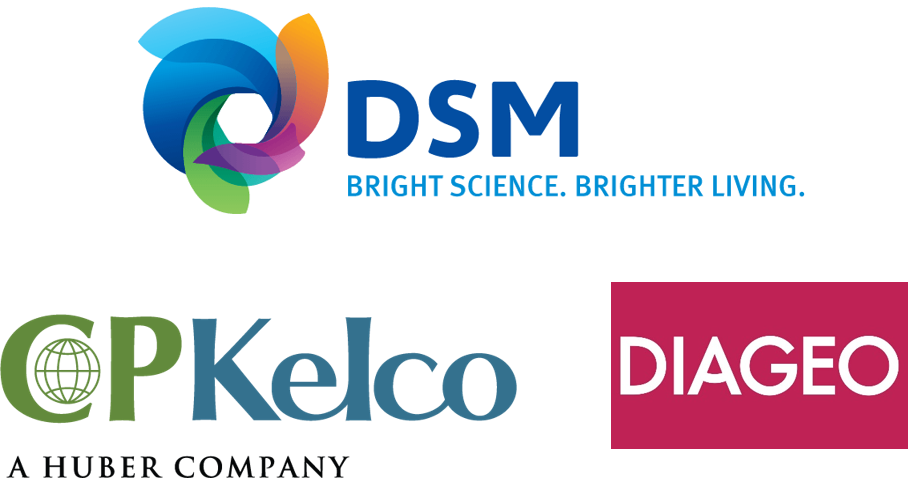Market Overview:
"The global mouthfeel enhancing ingredients market was valued at US$ 1,843.9 Million in 2024 and is expected to register a CAGR of 6.1% over the forecast period and reach US$ 3,141.8 Million in 2033."
|
Report Attributes |
Details |
|
Base Year |
2024 |
|
Forecast Years |
2025-2033 |
|
Historical Years |
2021-2023 |
|
Mouthfeel Enhancing Ingredients Market Growth Rate (2025-2033) |
6.1% |
Mouthfeel enhancing ingredients are additives used in food and beverages to improve texture, flavor perception, and overall sensory experience. These products offer a heightened sensation in the mouth, enhancing the enjoyment of consumption. Mouthfeel enhancing ingredients can provide creaminess, smoothness, viscosity, and even the illusion of fat content without adding extra calories. Market offerings include emulsifiers like lecithin, which create stable mixtures, hydrocolloids such as pectin or xanthan gum that enhance viscosity, and fat replacers like maltodextrin that mimic creamy textures. Additionally, modified starches and protein isolates contribute to desired mouthfeels, ensuring a satisfying and pleasurable culinary experience.
The global mouthfeel enhancing Ingredients market is registering steady revenue growth due to rising consumer demand for enhanced sensory experiences in food and beverages. Consumption of these ingredients has surged as manufacturers seek to optimize texture and flavor perception. Services catering to formulation and customization are on the rise, aiding product development. Advancements in food science and technology have enabled the creation of innovative mouthfeel enhancers, driving market expansion. Initiatives to promote clean label and natural ingredients are gaining traction. The advantages include improved product quality and consumer satisfaction. In-depth analysis and insights reveal a promising trajectory, with a focus on healthier and indulgent offerings.
Mouthfeel Enhancing Ingredients Market Trends and Drivers:
Consumer Sensory Experience: Increasing emphasis on delivering a pleasurable and immersive sensory experience to consumers is a primary factor driving growth of the mouthfeel enhancing ingredients market. Products with enhanced mouthfeel textures and flavors tend to enhance appeal and foster brand loyalty.
Health-Conscious Consumers: As health awareness is rising, there has been a rise in demand for healthier food and beverage options. Mouthfeel enhancers allow manufacturers to reduce fat and sugar content while maintaining the desired texture and taste, catering to health-conscious consumers without compromising on indulgence.
Innovation and Customization: Manufacturers are investing in research and development to create innovative mouthfeel enhancers that can mimic traditional ingredients while offering functional benefits. Customized solutions for different applications allow companies to differentiate their products and tap into niche markets.
Clean Label and Natural Ingredients: The trend towards clean label products and natural ingredients has prompted manufacturers to explore plant-based and clean label mouthfeel enhancers. This aligns with consumer preferences for recognizable and sustainable ingredients, driving revenue growth by meeting these demands.
Diverse Culinary Applications: Mouthfeel enhancers are not limited to a single product category. These find application in a wide range of foods and beverages, including dairy products, bakery items, sauces, and ready-to-eat meals. This versatility broadens market scope and increases revenue opportunities.
Global Culinary Fusion: As global cuisines influence eating habits, demand for authentic textures and flavors has inclined significantly. Mouthfeel enhancers enable manufacturers to accurately replicate these experiences, leading to increased consumption and revenue growth in diverse markets.
Mouthfeel Enhancing Ingredients Market Restraints:
Regulatory Scrutiny: Stringent regulations on food additives and ingredients could restrain growth of the mouthfeel enhancing ingredients market. Evolving regulatory requirements and potential restrictions may limit the use of certain additives, affecting product formulation and market expansion.
Consumer Skepticism: Rising concerns about artificial additives and unfamiliar ingredients might lead to consumer skepticism. Negative perceptions about the safety and health implications of mouthfeel enhancers could deter consumers from purchasing products, impacting revenue growth.
Allergen and Intolerance Concerns: Some mouthfeel enhancers might contain allergens or cause intolerances in certain individuals. As allergen awareness increases, manufacturers must address these concerns to avoid limiting their market share and revenue potential.
Cost and Pricing Pressures: Developing and incorporating high-quality mouthfeel enhancers can be costly. Price-conscious consumers and intense market competition might limit manufacturers' ability to pass on increased costs to consumers, affecting profitability and revenue growth.
Technical Challenges: Achieving consistent and desired mouthfeel characteristics across various food and beverage applications can be technically challenging. Inconsistent results or difficulties in integration into different formulations could impact product performance and hinder market growth.
Negative Perception of Processed Foods: As consumers lean towards more natural and minimally processed foods, the use of mouthfeel enhancers might associate products with excessive processing. This perception can hinder adoption and negatively affect revenue growth, especially in markets valuing authenticity and simplicity.
Mouthfeel Enhancing Ingredients Market Opportunities:
Product Innovation: Companies can capitalize on rising demand for novel and versatile mouthfeel enhancers by investing in research and development. Creating innovative solutions that cater to specific applications or address emerging trends like plant-based, clean label, or health-conscious formulations can open new revenue streams.
Customization Services: Offering tailored solutions for different food and beverage products enables companies to cater to the unique needs of manufacturers. Providing customization services based on flavor profiles, texture requirements, and nutritional goals can attract clients seeking differentiated products and generate additional revenue.
Partnerships with Food Manufacturers: Collaborating with food and beverage manufacturers to co-develop products can lead to mutually beneficial partnerships. By providing technical expertise in formulating with mouthfeel enhancers, companies can secure long-term contracts, ensuring a consistent revenue source.
Educational Initiatives: Hosting workshops, webinars, and educational content about the benefits and applications of mouthfeel enhancers can position companies as industry leaders. Educating manufacturers about the value these ingredients bring to their products can lead to increased adoption and revenue growth.
Market Expansion: Exploring new geographic markets and consumer segments can create opportunities for revenue diversification. Tailoring mouthfeel enhancers to regional preferences and culinary traditions can attract untapped markets and broaden the customer base.
Vertical Integration: Companies can consider vertical integration by not only producing mouthfeel enhancers but also developing finished products that showcase the effectiveness of their ingredients. This approach can create an additional revenue stream through direct consumer sales.
Mouthfeel Enhancing Ingredients Market Segmentation:
By Product Type:
- Emulsifiers
- Hydrocolloids
- Proteins & Starches
- Sweeteners
- Flavors & Enhancers
By Source:
- Plant-based
- Animal-based
- Synthetic
By Application:
- Dairy Products
- Bakery & Confectionery
- Beverages
- Processed Meats
- Snacks & Convenience Foods
By End-user:
- Food Manufacturers
- Foodservice Industry
- Retail Consumers
By Function:
- Texture Enhancement
- Flavor Enhancement
- Viscosity Modification
- Fat Reduction
- Calorie Reduction
Mouthfeel Enhancing Ingredients Market, By Region:
North America:
- United States
- Canada
Europe:
- Germany
- The U.K.
- France
- Spain
- Italy
- Russia
- Poland
- BENELUX
- NORDIC
- Rest of Europe
Asia Pacific:
- China
- Japan
- India
- South Korea
- ASEAN
- Australia & New Zealand
- Rest of Asia Pacific
Latin America:
- Brazil
- Mexico
- Argentina
Middle East & Africa:
- Saudi Arabia
- South Africa
- United Arab Emirates
- Israel
Regional analysis in the global mouthfeel enhancing ingredients market reveals key regions and countries driving growth. North America and Europe lead due to developed food industries and consumer demand for enhanced textures. Asia-Pacific showcases potential with rising disposable income and a penchant for indulgent experiences.
Developing nations like India and China are showing increasing demand for these ingredients in processed foods. Latin America and the Middle East exhibit growth as their food sectors mature. Preference shifts towards natural and clean-label options have spurred innovation, influencing product sales. Continued regional developments aligning with consumer preferences will determine the trajectory of demand and market potential.
Leading Companies in Mouthfeel Enhancing Ingredients Market & Competitive Landscape:
The global mouthfeel enhancing ingredients market is characterized by a competitive landscape, driven by innovation, product development, and strategic partnerships. As consumer demand for enhanced sensory experiences and texture-driven indulgence rises, manufacturers are focusing on securing their position in this evolving market.
Several key players dominate the competitive landscape, and leading mouthfeel enhancing ingredients manufacturers include companies such as Ingredion Incorporated, Cargill, Inc., Kerry Group, DuPont Nutrition & Biosciences, and Tate & Lyle PLC. These industry giants have extensive research and development capabilities, enabling them to create innovative solutions that cater to diverse applications across the food and beverage sector. Global reach, well-established distribution networks, and partnerships with various food producers provide a strong foundation for market presence.
The competitive landscape also has presence of smaller players and specialized firms that focus on niche markets or specific types of mouthfeel enhancers. These companies often excel in customization, catering to unique requirements and regional preferences. The dynamic nature of the market encourages collaboration between manufacturers, suppliers, and food producers to deliver tailored solutions that meet evolving consumer tastes.
In this rapidly expanding market, manufacturers are not only focusing on improving the sensory experiences of processed foods, but also aligning their offerings with clean label trends, natural ingredients, and sustainability. As regulatory standards evolve and consumer preferences shift, market leaders are investing in research and development to create cleaner, healthier, and more sustainable mouthfeel enhancers, ensuring they remain at the forefront of industry advancements.
Company List:
- Ingredion Incorporated
- Cargill, Inc.
- Kerry Group
- DuPont Nutrition & Biosciences
- Tate & Lyle PLC
- Givaudan
- Symrise AG
- CP Kelco
- Firmenich SA
- Archer Daniels Midland Company (ADM)
- Corbion N.V.
- Sensient Technologies Corporation
- IFF (International Flavors & Fragrances Inc.)
- Ashland Global Holdings Inc.
- Naturex (Groupe SEBIA)
Research Scope
|
Report Metric |
Report Details |
|
Mouthfeel Enhancing Ingredients Market size available for the years |
2022-2033 |
|
Base Year |
2024 |
|
Forecast Period |
2025-2033 |
|
Compound Annual Growth Rate (CAGR) |
6.1% |
|
Segment covered |
Product Type: Emulsifiers, Hydrocolloids, Proteins & Starches, Sweeteners, Flavors & Enhancers Source: Plant-based, Animal-based, Synthetic Application: Dairy Products, Bakery & Confectionery, Beverages, Processed Meats, Snacks & Convenience Foods End-user: Food Manufacturers, Foodservice Industry, Retail Consumers Function: Texture Enhancement, Flavor Enhancement, Viscosity Modification, Fat Reduction, Calorie Reduction |
|
Regions Covered |
North America: The U.S. & Canada Latin America: Brazil, Mexico, Argentina, & Rest of Latin America Asia Pacific: China, India, Japan, Australia & New Zealand, ASEAN, & Rest of Asia Pacific Europe: Germany, The U.K., France, Spain, Italy, Russia, Poland, BENELUX, NORDIC, & Rest of Europe The Middle East & Africa: Saudi Arabia, United Arab Emirates, South Africa, Egypt, Israel, and Rest of MEA |
|
Fastest Growing Market in Europe |
Germany |
|
Largest Market |
North America |
|
Key Players |
Ingredion Incorporated, Cargill, Inc., Kerry Group, DuPont Nutrition & Biosciences, Tate & Lyle PLC, Givaudan, Symrise AG, CP Kelco, Firmenich SA, Archer Daniels Midland Company (ADM), Corbion N.V., Sensient Technologies Corporation, IFF (International Flavors & Fragrances Inc.), Ashland Global Holdings Inc., Naturex (Groupe SEBIA), and among others. |
Frequently Asked Question
What are some key factors driving demand for mouthfeel enhancing ingredients?
Demand for mouthfeel enhancing ingredients is primarily driven by consumer preferences for enhanced sensory experiences in food and beverages. Also, the trend towards healthier products, innovation in food processing, and the need to cater to various dietary preferences are also contributing factors.
How is the global mouthfeel enhancing ingredients market report segmented?
The global mouthfeel enhancing ingredients market report segmentation is based on product type, source, application, end-user, function, and region
How big can the global mouthfeel enhancing ingredients market be by 2033?
The market is estimated to reach US$ 3,141.8 Million by 2033.
At what CAGR will the global mouthfeel enhancing ingredients market expand?
The global mouthfeel enhancing ingredients market is expected to register a 6.1% CAGR through 2025-2033.
What is the size of the global mouthfeel enhancing ingredients market in 2024?
The global mouthfeel enhancing ingredients market size reached US$ 1,843.9 Million in 2024.

